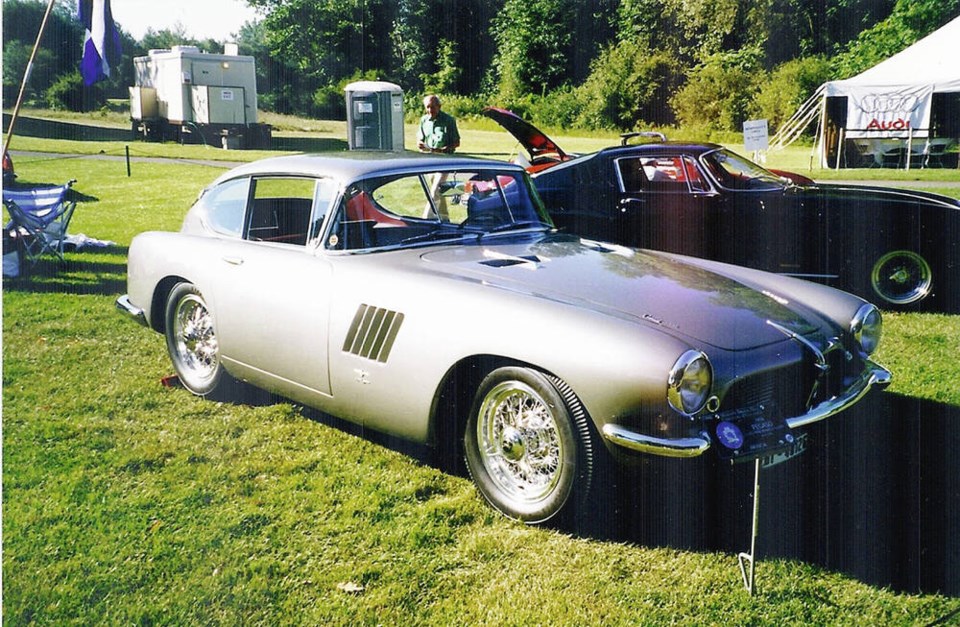Although Spain did not have a strong automotive heritage, it did produce vehicles ranging from the massive Rolls-Royce-class Hispano-Suizas of the 1920s and ’30s to the tiny single-cylinder Biscuter microcar of the 1950s. It also built our subject, the rare and exotic Grand Touring Pegaso, named after Pegasus the winged horse of Greek mythology.
Following the Second World War, the state-owned ENASA (Empresa Nacional de Autocamiones SA, or National Truck Manufacturing Co.), which occupied the old Hispano-Suiza plant in Barcelona, wished to glamourize its image and demonstrate Spain’s technological prowess. It also wanted some exciting work for its apprentice tradesmen.
To capitalize on the rising popularity of sports cars ENASA decided to produce a GT designed to compare to the world’s best technology. Fortunately, they had some expertise on staff because ENASA’s chief engineer, Spanish-born and -educated Don Wilfredo Ricart, was formerly technical director of Alfa Romeo.
Ricart began the design in 1950 and chose a V-8 engine, an unusual layout in Europe at that time. He included double overhead camshafts, a feature usually found on competition engines, although Jaguar’s famous XK120 inline six had them. Ricart’s goal was to create a car with almost Grand Prix racing technology for use on the street.
In addition to the four gear-driven camshafts, the all-aluminum engine had other competition-oriented features like cooler running sodium-filled exhaust valves, dry-sump lubrication and an oil cooler.
One, two or four Weber carburetors could be fitted, and compression ratios ranged from 7.8:1 to 9.0:1 to cope with postwar Spain’s uneven gasoline octane.
The original engine displaced 2.5 litres and claimed 165 horsepower, but few 2.5s were built before it was enlarged to 2.8 and then 3.2 litres. Supercharging was available.
Power reached the rear wheels through a rear-mounted, five-speed manual transaxle unit with a constant-mesh (non-synchromesh) gearbox behind the differential.
The light alloy 325-mm (12.8 in.) diameter drum brakes had twin hydraulic systems and were finned and ventilated. Mounted outboard at the front and inboard at the rear, they sounded impressive but would prove inadequate for serious competition.
The suspension was fully independent via longitudinal torsion bars and A-arms in front and lateral torsion bars at the rear with a solid De Dion axle. With a wheelbase of only 2,337 mm (92 in.) the Pegaso was relatively small.
The Pegaso Z102 was introduced at the 1951 Paris Auto Salon where it created considerable interest, both for its exotic specifications and its Spanish origin. No one quite expected a cutting-edge GT car from a truck and bus company, especially a Spanish one.
The factory fitted its own body or would prepare the chassis for custom bodies from the styling/coach building houses of Italy or France.
Performance of the 998-kilogram (2,200 lb.) Pegaso was quite strong. England’s Autocar magazine recorded zero to 80 km/h (50 mph) in 8.3 seconds, and to 161 (100) in 35.0 seconds with a 2.5-litre Z102. Top speed was over 161 km/h (100 mph).
ENASA tried to establish the Pegaso’s reputation in competition with mixed results, due in part to bad luck. Two roadsters were entered in the 1952 Monaco Grand Prix, held as a sports car race that year, but withdrew due to poor handling.
There were some hillclimb successes, and two cars were entered in the 1953 Le Mans, France 24-hour race. Unfortunately, a factory fire damaged them so badly they could not compete. Two replacements were quickly prepared but one withdrew and the other crashed, killing the driver.
To demonstrate its top speed, a 2.8-litre supercharged Pegaso was taken to the Belgium’s famous Jabbeke highway where it reached 241 km/h (149.76 mph) for a flying mile. Everyone was suitably impressed until Jaguar took a modified stock XK 120 roadster there a few weeks later and ripped through the flying mile at 278 km/h (172.41 mph).
Pegaso’s principal racing exposure in North America came in the 1954 Carrera Panamericana, better known as the Mexican Road Race, a border-to-border dash through Mexico. The Pegaso rose high enough to challenge the front runners before crashing and burning on stage four of the race.
Since Pegasos were largely hand-built, production was never high. By the mid-1950s, demand for the company’s commercial vehicles was straining capacity, so cars took lower priority. Ricart designed a new overhead-valve V-8 that came in displacements as large as 4.7 litres, but few were made.
Production ceased in 1958 and the company returned exclusively to trucks and buses. It is estimated that about 100 Pagasos were built, making it one of the world’s rarest production cars.
Pegaso’s technical features are common today, but they weren’t six decades ago. This made the exotic Spanish sports car named for a mythical flying horse and built by a truck and bus company so unusual for its era.



